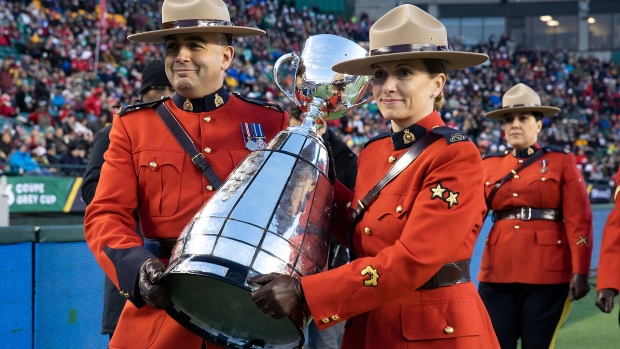Feb 19, 2021
The CFL isn’t going to play without fans in the stands
The league can’t just come out and commit to a full season starting in June because that commitment doesn’t exist from all of its teams, Dave Naylor writes.
By Dave Naylor

Nearly a year after the COVID-19 pandemic ground the sports world to a halt, we’re still left to guess when the Canadian Football League will play its first game since the Winnipeg Blue Bombers walked off the field as Grey Cup champions back in November of 2019.
Commissioner Randy Ambrosie said this week that the league is “committed” to playing the 2021 season without saying what that would look like, or assuring fans that a full 18-game schedule would start on time.
All of which is highly frustrating for CFL fans who’ve watched other leagues – bigger and smaller – manage to play through the pandemic. And at this point – unlike last summer – there is no doubt that it can be done, the way having been shown both in the NFL and American college football.
So what’s the difference? Why can’t the CFL just come out and commit to a full season starting in June?
The answer is because that commitment doesn’t exist from all of the teams. If it did, the league would be screaming it from the mountain tops.
The reason it doesn’t exist has to do with the core problem the pandemic has presented to the CFL from the beginning: its business model cannot function without fans in the stands.
That hasn’t changed in a year for a league where as much as 60 per cent of all team revenue is tied in some way to home game activity. There is no alternative business plan for this league. Fans can wish for it all they want. It doesn’t exist.
The only way the 2021 CFL season can start on time is if fans are allowed back in stadiums to a meaningful degree by the middle of June, or if governments guarantee that decision is on the way (although nothing is really guaranteed in a pandemic).
Can that happen? A lot depends on the efficiency of the vaccine rollout over the next four months and the degree to which the virus is otherwise kept under control, especially when it comes to new variants.
Governments in Canada have been extremely conservative when to comes to opening venues for thousands of people to gather.
Consider that strip clubs were open last summer in Ontario but places where one could sit outside watching sports, socially distancing and wearing a mask, were not. Logic would tell anyone that sitting outdoors in a stadium is safer than attending movie theaters, restaurants, bars, gyms, or a whole lot of other businesses that were allowed to open at points over the past year.
Expect the CFL to be part of lobbying efforts to get stadiums open this spring and summer. But ultimately, it’s a matter that lies beyond the league’s control. Which brings us back to why the league won’t commit to starting its full schedule on time.
Are there teams that would play a season without fans? Certainly not a full one.
So the question becomes: What’s the threshold upon which you can get all nine teams to agree? Is it 10 per cent of stadiums open, 25 per cent, 50 per cent? Would all nine teams agree to start the season with empty stands if there was a high probability that capacity could ramp up during the season?
Those are the very questions the league is sorting through right now.
The strong hunch from all directions is that the league will open training camps in mid-summer and be playing by Labour Day, by which time it’s anticipated that significant percentages of the stadiums will be opened.
This scenario, besides allowing teams to avoid the risk of having to open the season without fans in the stands, would shorten the schedule by roughly half. That would drastically reduce teams’ loses for this season, which would suit the owners just fine.
Missing the start of the season would surely be met with howls of outrage from fans and those in the media who will point at other leagues and incredulously ask “Why not us?”
But the fact is that this league is never going to play without fans in the stands. Not last year, not this year, not ever.


